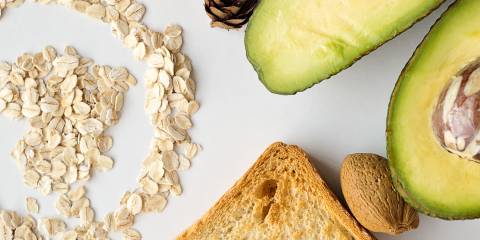If you didn’t know better, you’d think it was some kind of modern dance.
The graceful gestures of qi gong (say “chee gong”) combine slow postures and movements with deep abdominal breathing, meditation, visualization, self-massage, and vocalization—offering a host of health benefits and overall mind-body harmony.
Going With the Flow
Qi gong joins acupuncture, herbology, and acupressure to comprise four branches of traditional Chinese medicine. “There are as many variations of qi gong as there are practitioners,” says Jim Alan, a qi gong instructor in Portland, Oregon, who has been practicing since 1982. “In my system, the basic movements tend to be slow ones, coordinated with the breath.” While standing and sitting, bending forward and backward, squatting and stretching, “arms and hands often move in opposite directions—out and up, or down and back,” he adds. “The idea is whole-body movement, one part of the body being able to move another part, with a connection between the ground and those other parts. It’s like pushing a heavy cart. You’re standing firm with all of your energy going out of your hands and feet.”
The word qi gong comes from two Chinese characters—qi (energy, life force or breath) and gong (practice or work). In traditional Chinese philosophy and medicine, it is thought that qi is the force that animates every living being, as it moves through the body via invisible pathways called meridians. Qi also passes between you and others. Stress, illness, and injury can block or stop the flow of qi in areas of the body. In turn, “wherever qi stagnates for too long is a place where disease may start,” says Alan. Practice qi gong, however, and you help move your qi and increase the circulation of blood and oxygen.
Health and Alignment
“By sending more oxygen to your cells and brain, qi gong opens constricted blood vessels, which are often associated with pain—particularly muscle pain and migraines,” says Ken Cohen, qi gong master, executive director of the Qigong Research & Practice Center in Nederland, Colorado, and author of The Way of Qigong. Qi gong also ups your endorphins, those feel-good chemicals released by the brain, known to reduce pain and stress. People turn to qi gong for everything from headaches and premenstrual cramps to joint pain and anxiety. Lyle Lindsey, a woodworker in Portland, Oregon, has been practicing qi gong for two years—every morning for about 20 minutes, as well as up to 20 times throughout the day, if just for a couple of minutes.
“It’s an exercise that can be done in the middle of a conflict or anything that may cause tension, while I’m working with wood or with people,” he says. “Being able to breathe into tension has made me a calmer person, more in control of situations that might cause me stress,” he continues. Through deep, conscious breathing with movement, “qi gong also connects me more with myself. Then the rest of my life is more focused and more easily comes into alignment.”
The degree of qi movement and connectiveness one feels within him- or herself varies from person to person. “Everyone does qi gong at the level of their own awareness,” says Alan. “The important thing is to move and circulate the qi of the entire body in a balanced and harmonious way that is appropriate for you.” What’s great about qi gong is that the more you do it, the more in touch with your body you’ll be. This awareness promises to deepen your practice, which can only enhance your health and quality of life.



